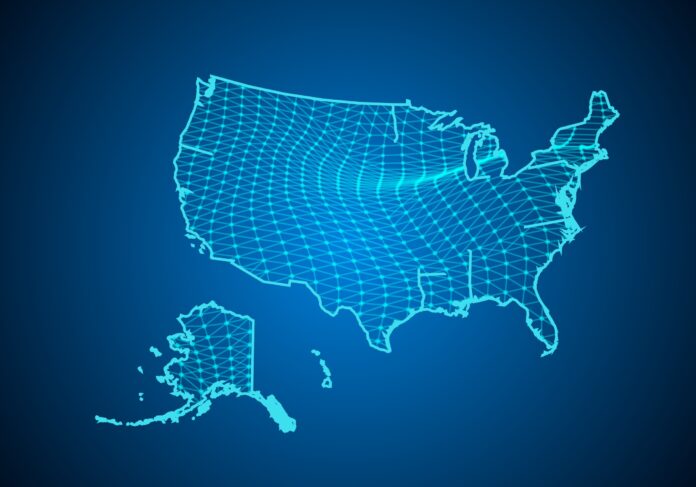Texas to receive the largest amount: $3.3 billion in federal funds to close the digital divide
The Biden administration has announced how it will divvy up $42.5 billion in federal funding for broadband among the U.S. states and territories; now it’s on the states to detail the individual programs which will award the grants.
The Broadband Equity, Access and Deployment (BEAD) program announcement was slated to be made by June 30; the 50 states, the District of Columbia and five U.S. territories will formally receive notice of their allocations on that day, according to the National Telecommunications and Information Administration. But NTIA has released the raw numbers on the state- and territory-level allocations four days early.
The largest allocation will go to Texas: $3.3 billion to close the digital divide in that state. California will receive $1.86 billion in federal funding, Missouri will receive nearly $1.74 billion to round out the three highest allocations. Nineteen states will receive more than a billion dollars each for broadband deployment funding.
The BEAD program funding announcement comes on the heels of another $930 million in middle-mile infrastructure funding that was awarded last week.
The allocations, as laid out by NTIA, are:
| Alabama | $1,401,221,901.77 |
| Alaska | $1,017,139,672.42 |
| Arizona | $993,112,231.37 |
| Arkansas | $1,024,303,993.86 |
| California | $1,864,136,508.93 |
| Colorado | $826,522,650.41 |
| Connecticut | $144,180,792.71 |
| Delaware | $107,748,384.66 |
| District of Columbia | $100,694,786.93 |
| Florida | $1,169,947,392.70 |
| Georgia | $1,307,214,371.30 |
| Hawaii | $149,484,493.57 |
| Idaho | $583,256,249.88 |
| Illinois | $1,040,420,751.50 |
| Indiana | $868,109,929.79 |
| Iowa | $415,331,313.00 |
| Kansas | $451,725,998.15 |
| Kentucky | $1,086,172,536.86 |
| Louisiana | $1,355,554,552.94 |
| Maine | $271,977,723.07 |
| Maryland | $267,738,400.71 |
| Massachusetts | $147,422,464.39 |
| Michigan | $1,559,362,479.29 |
| Minnesota | $651,839,368.20 |
| Mississippi | $1,203,561,563.05 |
| Missouri | $1,736,302,708.39 |
| Montana | $628,973,798.59 |
| Nebraska | $405,281,070.41 |
| Nevada | $416,666,229.74 |
| New Hampshire | $196,560,278.97 |
| New Jersey | $263,689,548.65 |
| New Mexico | $675,372,311.86 |
| New York | $664,618,251.49 |
| North Carolina | $1,532,999,481.15 |
| North Dakota | $130,162,815.12 |
| Ohio | $793,688,107.63 |
| Oklahoma | $797,435,691.25 |
| Oregon | $688,914,932.17 |
| Pennsylvania | $1,161,778,272.41 |
| Rhode Island | $108,718,820.75 |
| South Carolina | $551,535,983.05 |
| South Dakota | $207,227,523.92 |
| Tennessee | $813,319,680.22 |
| Texas | $3,312,616,455.45 |
| Utah | $317,399,741.54 |
| Vermont | $228,913,019.08 |
| Virginia | $1,481,489,572.87 |
| Washington | $1,227,742,066.30 |
| West Virginia | $1,210,800,969.85 |
| Wisconsin | $1,055,823,573.71 |
| Wyoming | $347,877,921.27 |
| American Samoa | $37,564,827.53 |
| Guam | $156,831,733.59 |
| Northern Mariana Islands | $80,796,709.02 |
| Puerto Rico | $334,614,151.70 |
| U.S. Virgin Islands | $27,103,240.86 |
The next step is for states and territories to submit proposals to NTIA describing how they will allocate BEAD funding; once NTIA approves a proposal, the state or territory can access at least 20% of its allocated funding.
“This is a watershed moment for millions of people across America who lack access to a high-speed Internet connection. Access to Internet service is necessary for work, education, healthcare, and more,” said Assistant Secretary of Commerce for Communication and Information Alan Davidson. “States can now plan their Internet access grant programs with confidence and engage with communities to ensure this money is spent where it is most needed.”
Telecom industry groups cheered the news, which signals the next step in the highly anticipated BEAD program. Competitive Carriers Association President and CEO Tim Donovan congratulated the Biden administration for announcing the allocations ahead of schedule. “As more detailed planning for BEAD projects moves forward, all technologies – including wireless solutions – will be needed to successfully complete efforts to close the digital divide.”
“Now, the focus on implementing the largest ever government investment in broadband expansion transfers to the states,” said Wireless Infrastructure Association President and CEO Patrick Halley. “Through the deployment of next generation wireless and fiber networks, supported by targeted investment in workforce development programs and smart permitting policies, every state in America has a generational opportunity to connect communities that need it most.”

